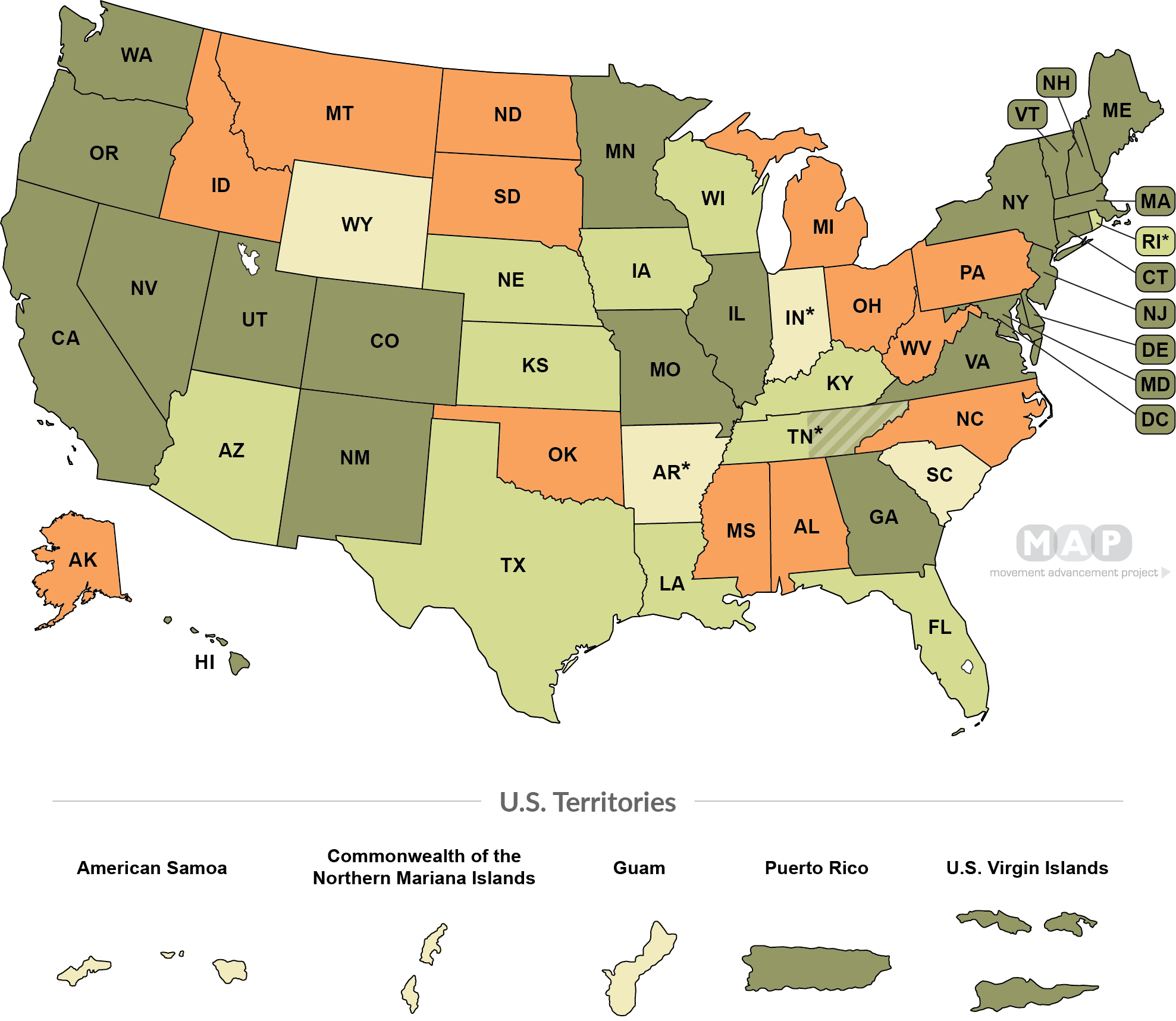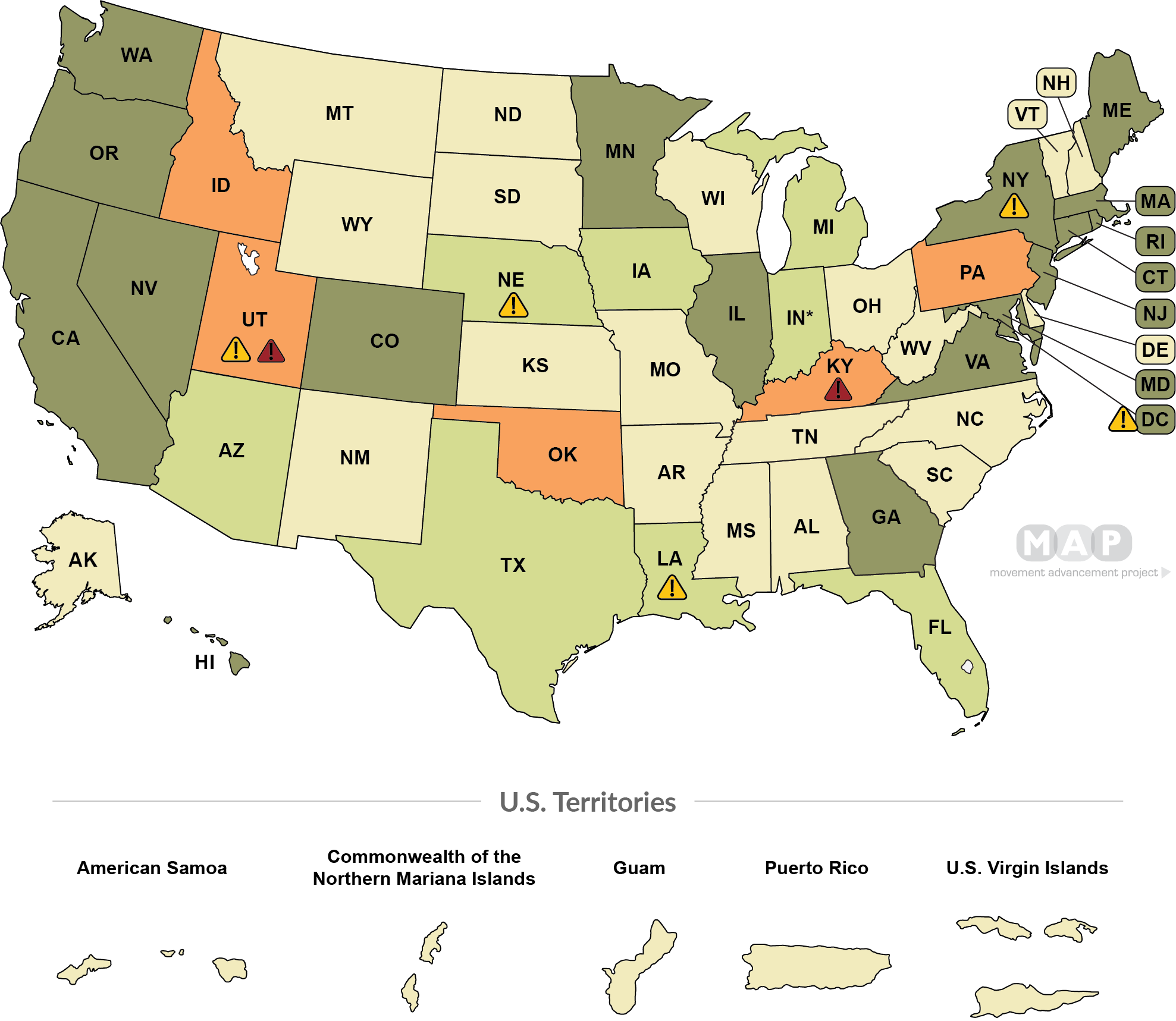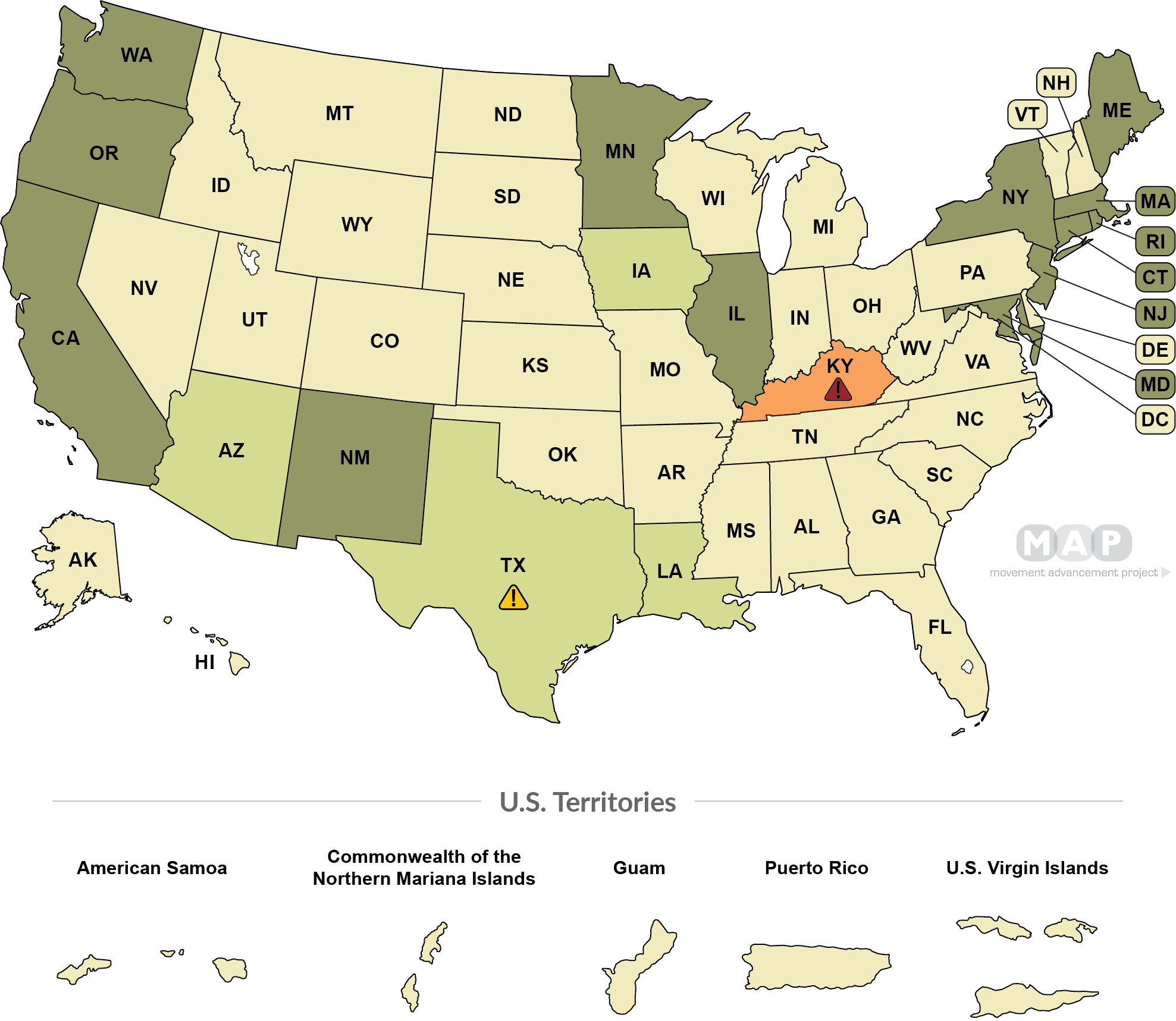| State |
Hate Crime Law |
Data Collection |
Law Enforcement Training |
Year Hate Crime Law Passed |
| |
Citations
|
Citations
|
Citations
|
|
| Alabama |
|
|
|
|
| Alaska |
|
|
|
|
| American Samoa |
|
|
|
|
| Arizona |
State has law that only covers sexual orientation |
State has law that only covers sexual orientation |
State has law that only covers sexual orientation |
2003 |
| Arkansas |
|
|
|
|
| California |
State has law that covers sexual orientation and gender identity |
State has law that covers sexual orientation and gender identity |
State has law that covers sexual orientation and gender identity |
1999 |
| Colorado |
State has law that covers sexual orientation and gender identity |
State has law that covers sexual orientation and gender identity |
|
2005 |
| Connecticut |
State has law that covers sexual orientation and gender identity |
State has law that covers sexual orientation and gender identity |
State has law that covers sexual orientation and gender identity |
2004 |
| Delaware |
State has law that covers sexual orientation and gender identity |
|
|
1997 (SO); 2013 (GI) |
| District of Columbia |
State has law that covers sexual orientation and gender identity |
State has law that covers sexual orientation and gender identity |
|
1989 |
| Florida |
State has law that only covers sexual orientation |
State has law that only covers sexual orientation |
|
2001 |
| Georgia |
State has law that covers sexual orientation and gender identity |
State has law that covers sexual orientation and gender identity |
|
2020 |
| Guam |
|
|
|
|
| Hawaii |
State has law that covers sexual orientation and gender identity |
State has law that covers sexual orientation and gender identity |
|
2003 |
| Idaho |
|
|
|
|
| Illinois |
State has law that covers sexual orientation and gender identity |
State has law that covers sexual orientation and gender identity |
State has law that covers sexual orientation and gender identity |
2001 (SO); 2016 (GI) |
| Indiana |
|
State has law that only covers sexual orientation |
|
|
| Iowa |
State has law that only covers sexual orientation |
State has law that only covers sexual orientation |
State has law that only covers sexual orientation |
2002 |
| Kansas |
State has law that only covers sexual orientation |
|
|
2002 |
| Kentucky |
State has law that only covers sexual orientation |
|
|
2001 |
| Louisiana |
State has law that only covers sexual orientation |
State has law that only covers sexual orientation |
State has law that only covers sexual orientation |
2002 |
| Maine |
State has law that covers sexual orientation and gender identity |
State has law that covers sexual orientation and gender identity |
State has law that covers sexual orientation and gender identity |
2001 |
| Maryland |
State has law that covers sexual orientation and gender identity |
State has law that covers sexual orientation and gender identity |
State has law that covers sexual orientation and gender identity |
2005 |
| Massachusetts |
State has law that covers sexual orientation and gender identity |
State has law that covers sexual orientation and gender identity |
State has law that covers sexual orientation and gender identity |
2002 (SO); 2011 (GI) |
| Michigan |
State has law that covers sexual orientation and gender identity |
State has law that only covers sexual orientation |
|
2025 |
| Minnesota |
State has law that covers sexual orientation and gender identity |
State has law that covers sexual orientation and gender identity |
State has law that covers sexual orientation and gender identity |
1993 |
| Mississippi |
|
|
|
|
| Missouri |
State has law that covers sexual orientation and gender identity |
|
|
1999 |
| Montana |
|
|
|
|
| Nebraska |
State has law that only covers sexual orientation |
State has law that only covers sexual orientation |
|
2002 |
| Nevada |
State has law that covers sexual orientation and gender identity |
State has law that covers sexual orientation and gender identity |
|
2001 (SO); 2013 (GI) |
| New Hampshire |
State has law that covers sexual orientation and gender identity |
|
|
2002 (SO); 2019 (GI) |
| New Jersey |
State has law that covers sexual orientation and gender identity |
State has law that covers sexual orientation and gender identity |
State has law that covers sexual orientation and gender identity |
2002 (SO); 2008 (GI) |
| New Mexico |
State has law that covers sexual orientation and gender identity |
|
State has law that covers sexual orientation and gender identity |
2003 |
| New York |
State has law that covers sexual orientation and gender identity |
State has law that covers sexual orientation and gender identity |
State has law that covers sexual orientation and gender identity |
2002 (SO); 2019 (GI) |
| North Carolina |
|
|
|
|
| North Dakota |
|
|
|
|
| Northern Mariana Islands |
|
|
|
|
| Ohio |
|
|
|
|
| Oklahoma |
|
|
|
|
| Oregon |
State has law that covers sexual orientation and gender identity |
State has law that covers sexual orientation and gender identity |
State has law that covers sexual orientation and gender identity |
2001 (SO); 2008 (GI) |
| Pennsylvania |
|
|
|
|
| Puerto Rico |
State has law that covers sexual orientation and gender identity |
|
|
|
| Rhode Island |
State has law that only covers sexual orientation |
State has law that covers sexual orientation and gender identity |
State has law that covers sexual orientation and gender identity |
2001 (SO) |
| South Carolina |
|
|
|
|
| South Dakota |
|
|
|
|
| Tennessee |
State has law that only covers sexual orientation |
|
|
2001 |
| Texas |
State has law that only covers sexual orientation |
State has law that only covers sexual orientation |
State has law that only covers sexual orientation |
2002 |
| U.S. Virgin Islands |
State has law that covers sexual orientation and gender identity |
|
|
2014 |
| Utah |
State has law that covers sexual orientation and gender identity |
|
|
2019 |
| Vermont |
State has law that covers sexual orientation and gender identity |
|
|
2001 |
| Virginia |
State has law that covers sexual orientation and gender identity |
State has law that covers sexual orientation and gender identity |
|
2020 |
| Washington |
State has law that covers sexual orientation and gender identity |
State has law that covers sexual orientation and gender identity |
State has law that covers sexual orientation and gender identity |
1993 (SO); 2009 (GI) |
| West Virginia |
|
|
|
|
| Wisconsin |
State has law that only covers sexual orientation |
|
|
2002 |
| Wyoming |
|
|
|
|







